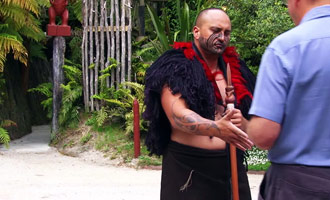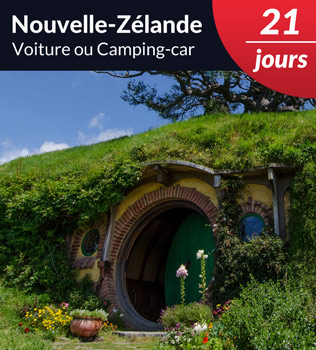
Discovery of Maori Culture.
Please contact us and we will help you to organize your trip! It's free and without commitment.
- Read the post
- Details
- Advices
The Practical Guide of the Activity.
- 1An Authentic Maori Culture?
- 2What Kind of Show Should You Expect?
- 3Are These Kinds of Maori Spectacles for You?
- 4Tamaki Maori Village: A Reenactment.
- 5Tamaki Maori Village: Traditional Hangi.
- 6Tamaki Maori Village: Spectacle and Dinner.
- 7How to Discover the Real Maori Culture?
An Authentic Maori Culture?
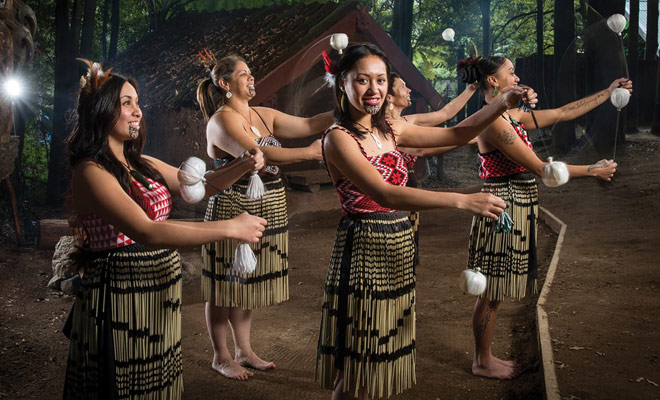
Authentic cultural spectacle or tourist attraction?
Maori shows have gradually become the cultural alibi of many trips to New Zealand. The activity is often presented as unavoidable, but privately some travel agents confess their embarrassment to the idea of recommending this kind of product to their customers.
At Kiwipal, we are sometimes contacted by people who wish to spend a night in an authentic Maori village (sic).
The question is quite absurd! Imagine a New Zealand tourist asking for a night in Asterix's village...
Of course, the Maori of New Zealand no longer live in huts, and they no more wear loincloth since centuries.
The clichés are still alive apparently, but there is also a lack of knowledge of the cultures of the Pacific.
One must acknowledge that some Maori have developed real slot machines with these kinds of folk spectacles. Is it nonetheless a tourist attraction that undermines the image of an entire community, as it is sometimes said? Or is it a tourist compromise that finally arranges everyone?
It is true that this alleged encounter with an ancestral culture is sometimes embarrassing. A few years ago, a New Zealand newspaper had revealed a scandal and shameful practices, highlighting the presence of dancers without any Maori ancestry. Authenticity is not exactly what you get with these shows.
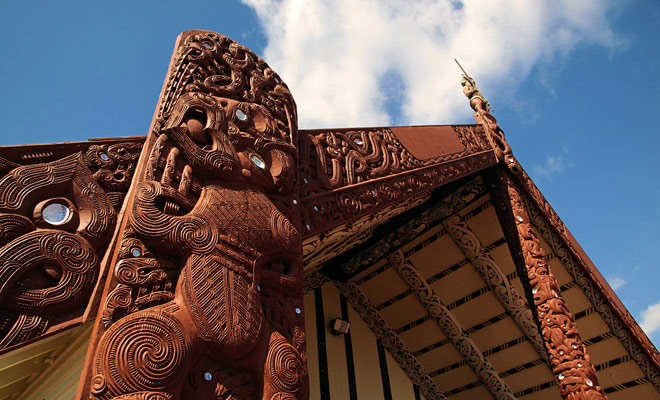
Maori art is an art of incredible beauty and finesse.
Are there any performances that worth the price? Should you persist in considering them as true cultural spectacles? And most of all, should you attend a show during your stay in New Zealand? I will try to answer all these questions honestly. You will see that if there are reasons to criticize, reality is finally quite balanced and some shows are quite nice and can be envisaged.
What Kind of Show Should You Expect?
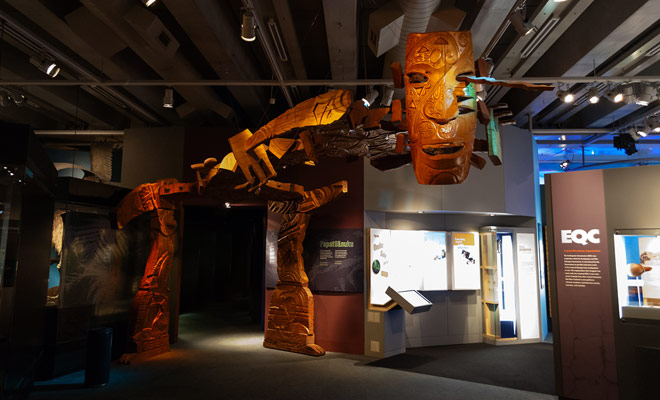
Museums place great emphasis on Maori culture.
There are many ways to discover Maori culture in New Zealand. At Kiwipal we advocate for the meeting with the population and the visit of the remarkable museums of the country..
The famous Te Papa of Wellington and the Auckland War Memorial deliver Maori dance performances that are staged with elegance, while being pedagogical without being boring.
Alongside this “noble” culture, there are countless shows (often including dinner), mostly concentrated in the region of Rotorua.
Let's put it straight: we are talking about folkloric shows whose equivalent exist on the entire Earth.
We would be very pretentious to look at them with contempt. Some activities are rather aesthetically pleasing.
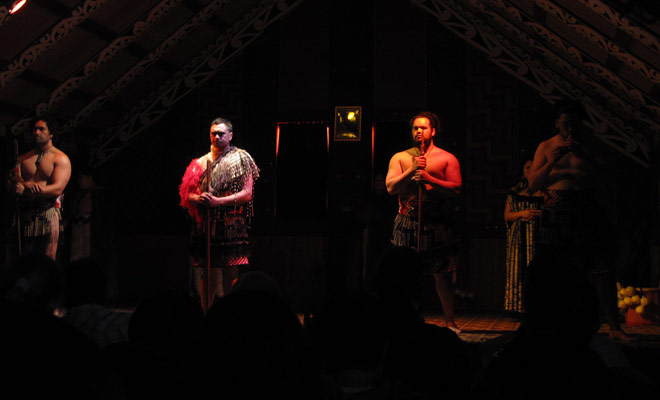
Dance performances are often of very good quality.
If the organizers can be blamed for a certain exaggeration when they claim to be “authentic” and “cultural”, the audience is rarely deceived.
There are, of course, some black sheep giving Haka demonstrations executed by warriors worn out by a real work in the chain.
When the dance shows are held in the common house “Marae”, the tradition requires that you take off your shoes before entering.
You can easily imagine the smell of a hundred feet after a day spent exploring the region. The experience is not pleasant if you see what I mean…
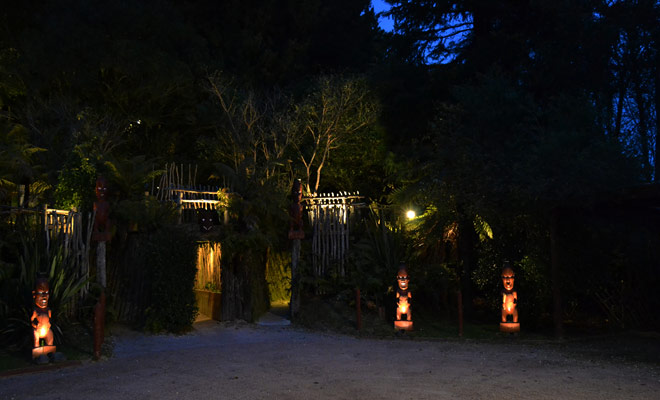
Not 100% authentic but nevertheless very well realized.
But let's put aside these bad shows that tarnish the image of the country. Let's talk instead of the “Tamaki Maori Village”, which among all organizers seems to provide honorable performances, even if you should also visit a good
Note that if I recommend (in a way) the “Tamaki Maori Village”, I might as well suggest the rather similar “Mitai Village” or “Te Puia” which has the advantage of being also a geothermal park during the day-time.
This is folklore, indeed, but effective folklore, provided that this kind of show is made for you, and that's exactly what we are going to check together.
Are These Kinds of Maori Spectacles for You?
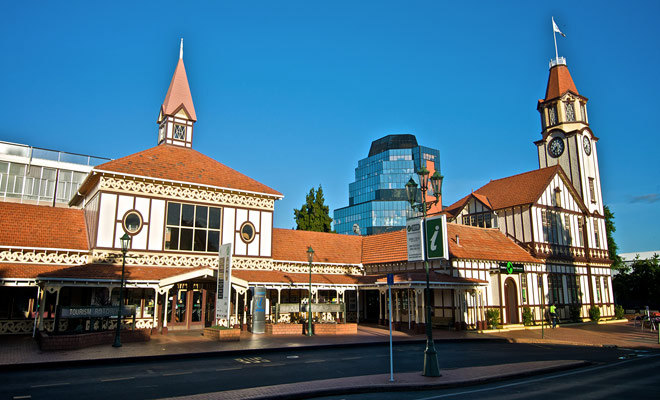
Book your place in the iSite.
Visit of the reconstituted village, interpretation of Haka,ritual dances and songs in costumes for almost four hours (dinner included) for an initially high price ($110) but most often available for half the price on online promotions websites.
“Tamaki Maori Village” proposes a spectacle for every public, refined in its smallest details.
The evening is punctuated by a dinner with a buffet to make you discover Maori cuisine and the famous Hangi.
Apart from families, the show attracts mostly seniors. The young people are often here in spite of themselves (especially because they booked their trip with a travel agency) are usually quite embarrassed by the very touristy atmosphere.
People less than thirty years old would be well inspired to pass their turn.
Children generally enjoy the demonstrations of Haka and the most folkloric parts (village, dances).
They are sometimes bored during dinner, which is no surprise, although the choice of desserts often delights them.
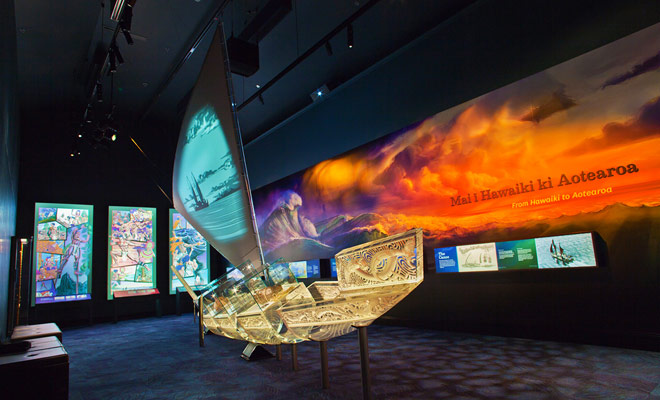
To understand Maori culture, visit the museums.
If your trip is too short to allow visits of museums, you may consider having a late afternoon punctuated by a dinner at Tamaki.
It may not be the best cultural experience, but it will provide an insight into the daily life and customs of the first inhabitants of the country.
On the other hand, if you have some time to spend, you should consider visiting the Rotorua Museum which contains a collection of remarkable treasures. You will discover many Maoris legends and the true story of the heroes who died in the trenches of Verdun 20,000 km from their homeland.
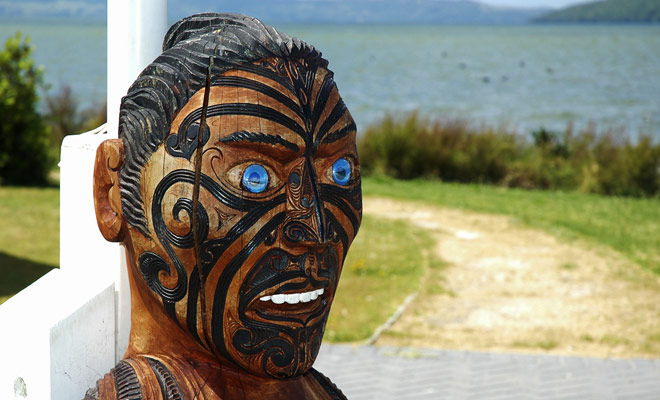
Maori culture is present everywhere in New Zealand.
Moreover, during many activities in New Zealand, the majority of the guides evoke Maori legends.
You will have the opportunity to nibble pieces of culture throughout the stay without having to “undergo” a dinner show that does not enchant you.
For those who wish to participate in the discovery of Tamaki Maori Village (the best of its kind), I will present the evening in detail and you will be in a better position to make your choice.
Tamaki Maori Village: A Reenactment.
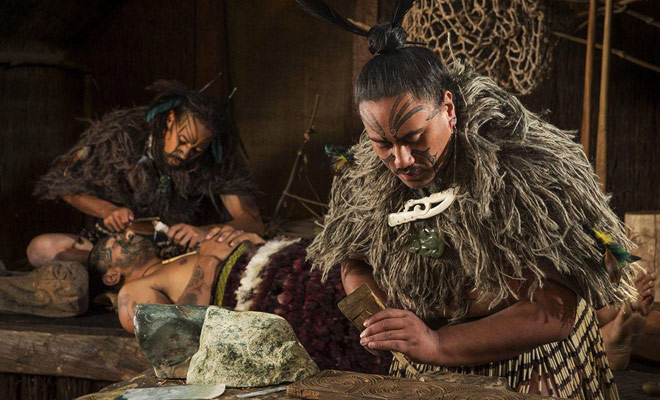
Tamaki offers one of the most successful shows.
The visit of Tamaki Maori Village is divided into three sequences that we will discover together and which begin with the visit of a reconstituted tribal village. An activity that has a price and does not come for free.
Expect $110 per adult and between $20 to $60 depending on the age of your children (5-9 years or 10-15 years). On the other hand, children under four enter the village free of charge. The “Waka”, which means, “the journey”, sounds somewhat pretentious when it refers to a bus ride to the Rotorua Forest. The guide who will officiate during every visit summarizes the “protocol” to be respected when entering a Maori fortified village.

Hosting ceremonies are quite realistic.
It's a typical group tour atmosphere! (you love or you hate), with the designation of a “tribal chief” among the visitors for the needs of the “Powhiri”: Maori warriors come to meet the group and perform a Haka.
The visiting tribal chief gives a “teka” which is a peace offering to the village chief.
Follow the welcome dance and the guided tour of a village reconstituted to appear as it was before the arrival of the Westerners. It is the occasion to observe the daily life of a clan amidst the fires lighted between the huts.
Warrior training for men, linen work for women. All in an atmosphere punctuated by songs.
Probably the best part of the visit. Tamaki Maori Village: Traditional Hangi.
Tamaki Maori Village: Traditional Hangi.
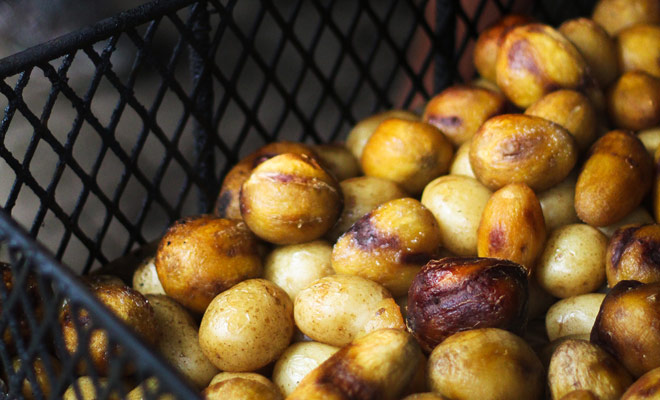
The Hangi is the method of cooking used by the Maori.
The visit of the village ends in a large covered room with the presentation of the “Hangi”. You will discover that the Hangi (pronounced “hangni”) does not designate a Maori culinary specialty, but a Polynesian cooking mode.
The cooking has never been the strong point of the Kiwis, whose diet is a mix of American and English cooking, hyper caloric...
Fortunately, Rotorua is one of the few areas in New Zealand where you can enjoy a traditional healthy meal.
The Hangi is not something one can improvise.
Food is packed in aluminum foil (formerly canvas bags), then placed in a hole previously covered with a bed of embers with a thin layer of earth and volcanic stones.
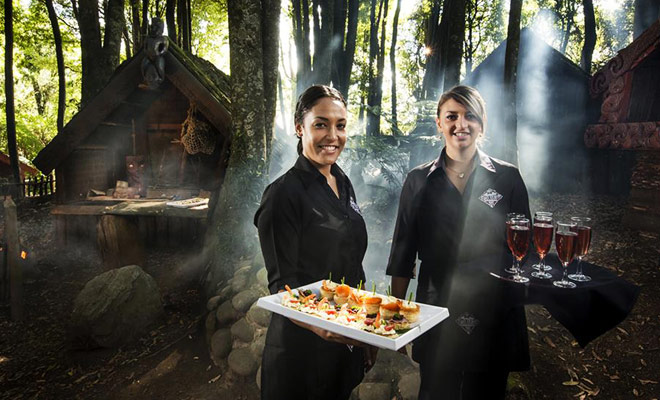
The Hangi has an inimitable smoky taste.
Hangi-cooked foods have an inimitable smoky taste. In addition to being healthy, this cooking sublimates the flavors of lamb, chicken and kumara (a sweet potato from New Zealand).
Those who are attentive to explanations will remember that the Hangi cooking lasts from 4 to 6 hours. Logically, the meal prepared in front of you won't be ready to be served for the dinner...
In reality, the dishes that make up the dinner will have been prepared during the day (but fortunately respecting the traditional cooking).
Tamaki Maori Village: Spectacle and Dinner.
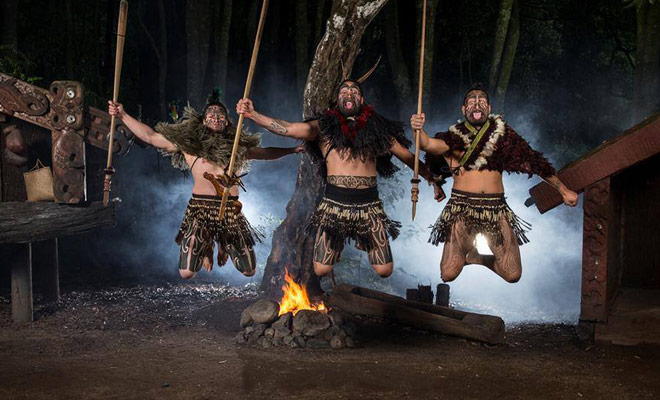
If you do not like the dinner-show concept, pass your turn.
The evening ends in the “Wharenui”, the sacred house. The sound of a horn calls visitors to attend dances and songs, while the diner's buffet is prepared.
To accompany the dinner, you can taste some “Rewana”, a recipe of Maori bread, and various green or pasta-based salads. Tasty Green Giant Mussels from New Zealand are worth a try if you've never tasted some before.
The dessert often attracts a crowd of “locusts” who take large portions of every possible dessert that they won't eat anyway (what a shame).
Do not wait too long if you want to taste the Pavlova, which the national dessert made of meringue and fresh fruit.
Do not forget that drinks (including alcohol) are not included in the price and are charged separately.
Nothing prevents you from sharing the note with friends or with other guests.

The dinner is actually a buffet in a large common room.
The visit of the “tribal market” comes at the late evening, while you wait for the return shuttle.
Fortunately, you can also listen to Maori legends, if the purchase of memories with uncertain geographical origin (china?) hardly tempts you.
The farewell ceremony “Poroporoaki”" ends the visit of Tamaki Maori Village.
After a short speech, you will return to your hotel in Rotorua. Now, it's time to discuss about the quality of the evening, and the opinions are usually balanced.
How to Discover the Real Maori Culture?

Do not forget that this is a show and you will not be disappointed.
I imagine you perplexed reading this article. It would be easy to simply make a global negative assessment of the Maori shows in the Rotorua area. However, I think it would be snobbery, and it would not reflect reality.
These tours are aiming especially families and seniors who are not exhausted by a day of hiking.
These are participants who appreciate the experience, especially when traveling in groups. Consequently, one must be a little indulgent.
Commercial success is obviously not a guarantee of quality, but it nevertheless imposes a minimum of effort, the public not being fooled when he pays. And if I must believe the rave reviews on the main tourist portals and communities of travelers, the public appreciates.
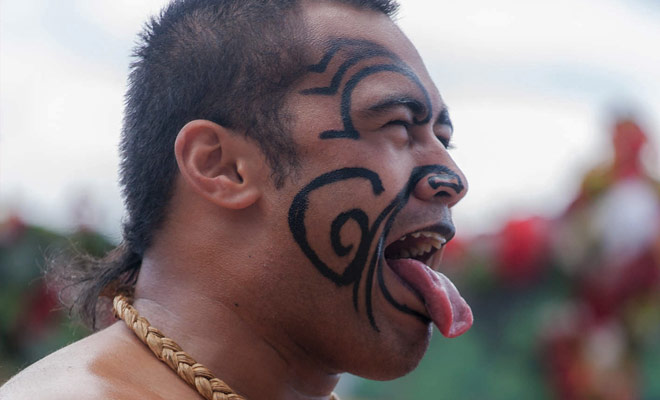
Maori culture is not just Haka!
The question is whether or not you belong to this audience?
If you are young and the atmosphere does not attract you, you should pass your turn because there are great chances for you to be disappointed. Alternatively, you can be tempted if you have a free schedule and nothing to lose.
The atmosphere is pleasant, the decorations are very well done (I'm thinking of the “Tamaki Maori village”, because other places are frankly disappointing).
The dinner is good and plentiful, which is already enough to have a good evening.
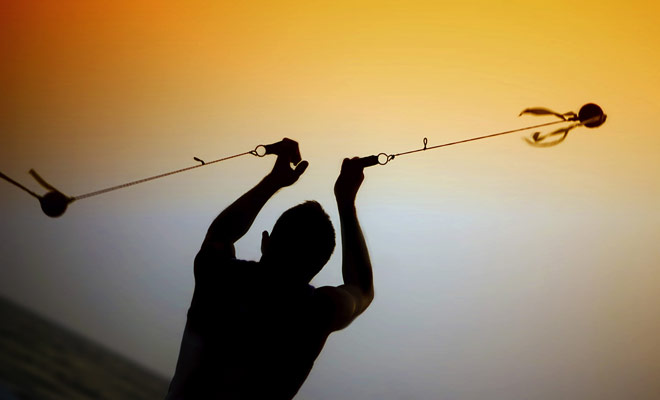
Maori culture is inseparable from the history of the country.
I overheard a conversation once from a traveler who was angry after seeing one of the dancers dressed in jeans after the show. He had the feeling that he had been deceived because he believed he was in an authentic Maori village! An anecdote, which illustrates the ambiguity of these “cultural” shows.
When they are well organized, these theme parks (I cannot find a better word) are not tourist traps, even if they are undeniably touristy.
Let's be crystal clear: these shows are not highly cultural ones but they are quite “popular” which is not an insult. Of course, this may be inappropriate for some of you, sometimes enough to leave an unpleasant memory.
But I would be curious to hear your opinion on the matter.
And if you hesitate, the best is probably to forge your own opinion. Feel free to contact us or ask your questions to Ben the Kiwi!


Questions & Answers.

What can I do for you? Practical questions, timetables ... if you need a kiwi to recommend a Maori show, I am at your disposal.
- All topics ... 8 answers in total
- Tamaki Maori Village 7 answers
- What Show Should I Choose? 1 answer
Tamaki Maori Village
- Can we go to Tamaki Maori Village on our own?
Yes, but the tariff will be the same whatever happens. The shuttle that leaves from downtown is convenient if you plan to consume alcohol during the dinner.
- Is the village of Tamaki a real Maori village?
Of course not, it is a decor restored with talent despite everything.
- How long does the Tamaki visit last?
Count between three and four hours depending on the length of the dinner.
- How to dress for the visit?
In winter, take a warm coat, you will be essentially outdoors. The rest of the year, keep a good sweater with you: the evenings are cool in the Rotorua area.
- Can we film during the village visit?
You are allowed to take pictures and to film whenever you like.
- Is there a map of the village of Tamaki?
There is a map, even if the tour will be guided, this will give you an overview of the location.Tamaki village map
- Is Tamaki Maori Village accessible for people with disabilities?
Access is possible by wheelchair.
What Show Should I Choose?
- How can I tell if a Maori show is of poor quality?
It is usually enough to look at the brochure's quality. If the printing quality and the paper look cheap, then the worse is to be expected.

